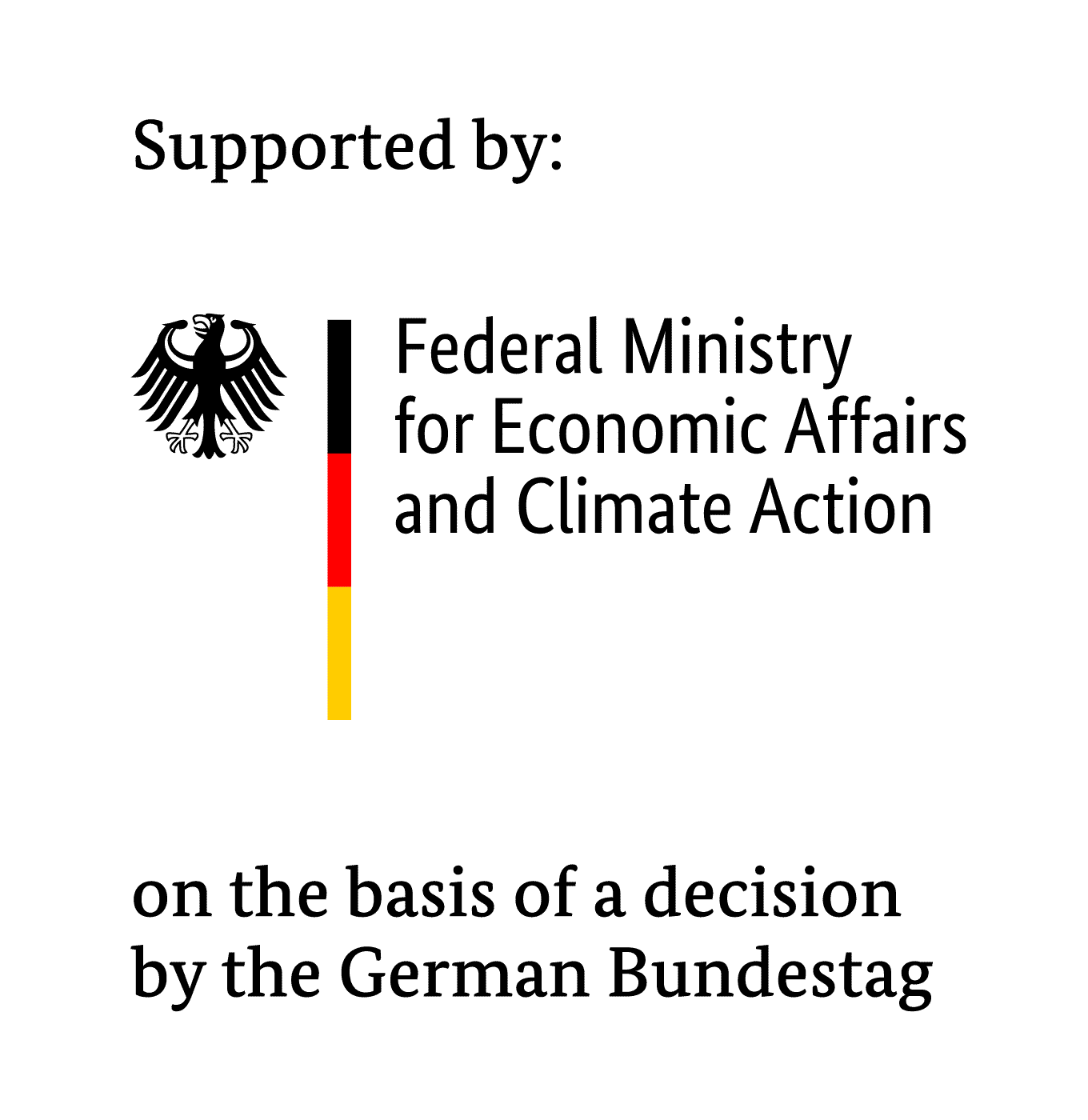BioKoRed: Use of biochar as a CO2-neutral reducing agent for the production of agglomerates from iron-containing residues
Federal Ministry for Economic Affairs and Climate Action (BMWK), 1 April 2024 to 31 March 2026
Project description
The goal of the project is to utilize biochar (also known as plant charcoal or biochar) as a CO2-neutral reducing agent in stamp-pressed agglomerates made from metallurgical residues and biogenic binders. For the first time, formulations will be developed using internal fine-grained and iron-rich residues along with suitable biogenic binders to produce self-reducing agglomerates incorporating biochar, which will then be introduced into the melting process of an iron foundry using a hot-blast cupola furnace.
These agglomerates enable the establishment of CO2-neutral internal iron recycling loops for dust and sludge fractions generated in the steel and iron industry, which currently must still be landfilled due to technical and economic restrictions. These material streams often contain immense amounts of oxidized iron that can potentially be recovered, thereby reducing the use of primary raw materials. To achieve this, previously unused biogenic residues will be pyrolyzed, and the resulting biochars will be used as reducing agents. In addition to the reducing properties of biochar, the mechanical properties such as cold and hot compressive strengths of the produced agglomerates are also a focus of investigation since these parameters affect the furnace usability of these agglomerates. The project aims to adjust the mechanical properties through the addition of biogenic binders and suitable biochars so that the agglomerates are suitable for use in melting processes at iron foundries. Based on the results, targeted recipes will be created, and agglomerates will be produced to further demonstrate their usability in the steel and iron industry. The usability of the most promising agglomerate formulations will be demonstrated within the project both at laboratory and pilot scale as well as in industrial-scale trials through their application in the melting operation at Isselguss Iron Foundry. Throughout the entire project duration, process and material parameters will continuously be collected to allow for detailed ecological and economic assessments.
With the developed method, largely climate-neutral secondary raw materials can be implemented for internal recycling of iron carriers. Furthermore, almost exclusively residual materials are utilized in this described process, most of which are currently largely unused or only thermally processed. This leads to significant improvements regarding climate and environmental aspects while making a substantial contribution to bioeconomy and circular economy through enhanced material flow management.
Approach and Workplan
- Residue and reductant characterisation: Comprehensive physical and chemical analysis of target residues (particle-size distribution, mineralogy, Fe phases, contaminants) and candidate biomass/biochar (proximate/ultimate analysis, porosity, surface area, ash chemistry, reactivity).
- Formulation and agglomeration: Design recipes that combine residues, biochar, and optional additives. Compare pressing, pelletizing, and alternative agglomeration routes to ensure green strength, throughput, and scalability.
- Performance and reduction testing: Quantify porosity, cold/hot compressive strength, abrasion resistance, and thermal-shock tolerance. Conduct standardized reduction tests to determine the degree of metallization and reduction kinetics and assess self-reduction behaviour and high-temperature stability in a laboratory-scale furnace to confirm furnace readiness.
- Scale-up and demonstration: Down-select the most promising formulations for pilot runs, then execute an industrial-scale trial to prove operability and process integration under real plant conditions.
- Data and assessment: Continuously collect process and material data to support a techno-economic evaluation and an ISO-conformant life-cycle assessment (LCA) of climate and resource impacts, benchmarked against conventional coke- or coal-bonded agglomerates.
Project keywords
Iron-bearing residue recycling; Cold-bonded agglomeration; Self-reducing agglomerates; Biomass/Biochar reductants; Toward CO2-neutral smelting
Project goals
- Develop optimal agglomerate recipes that balance green strength, resistance to furnace loads, porosity, and self-reduction potential.
- Substitute and optimize reductants by screening organic binders and biomass/biochar, and tune dosage to the specific residue chemistry.
- Validate performance and reduction behaviour through standardized tests (cold and hot compressive strength, abrasion, thermal shock, degree of metallization) and lab-scale furnace trials.
- Scale up and demonstrate operability through down-selection, pilot runs, and an industrial-scale trial integrated into existing plant conditions.
- Quantify benefits and define specifications with techno-economic analysis and an ISO-conformant LCA, benchmarked against coke- or coal-bonded agglomerates, to deliver a clear process window and implementation guidelines.
Project participants
Contact
Funding

This project is funded by the Federal Ministry of Economics and Climate Action (BMWK) under the funding code KK5652301VB4.



